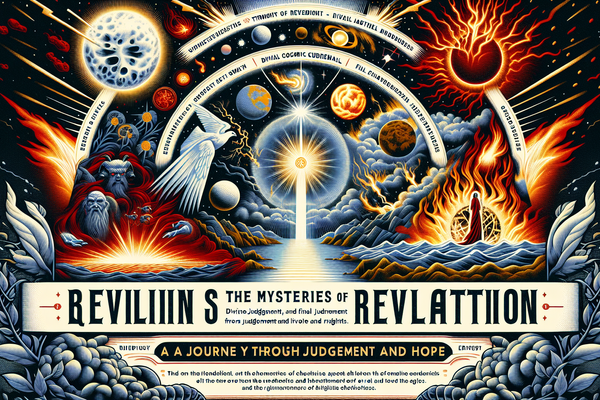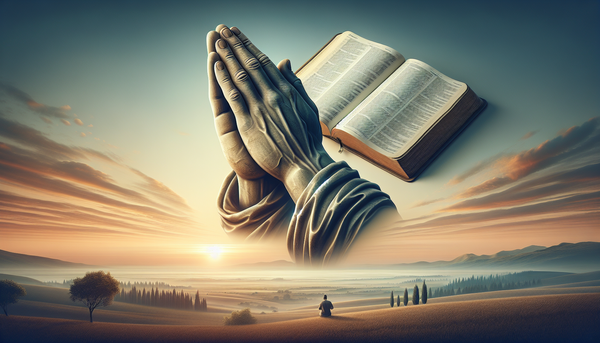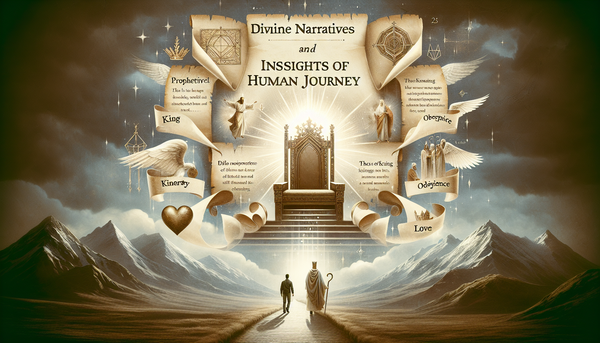The Book of Revelation, with its vivid imagery and profound symbolism, has both puzzled and inspired readers for centuries. As we delve into the 16th chapter, we are confronted with the stark realities of divine judgment juxtaposed against the ultimate triumph of good over evil. This blog post aims to unpack the complexities of Revelation 16, guiding readers through an interpretive journey that highlights the significance of the end-times events depicted therein. We will explore the themes of cosmic upheaval, divine wrath, final judgment, spiritual warfare, and the contrasting destinies of the righteous and the ungodly, all within the context of biblical prophecy. As we navigate these themes, let us approach the scripture with an open heart, seeking to understand the deeper messages that are as relevant today as they were in John's time.
Table of Contents
The Sixth Seal in Revelation 16:1-2
The opening of the sixth seal in Revelation 16:1-2 unleashes a series of cataclysmic events that signal the imminent end of times. The great earthquake, the sun turning black, and the moon becoming like blood are powerful symbols that evoke the Day of the Lord, a biblical concept associated with judgment and redemption. As Revelation 6:12-14 describes the earth and heavens in upheaval, we are reminded of similar prophetic language in Joel 2:31 and Matthew 24:29, where cosmic disturbances mark significant eschatological moments. In Isaiah 13:9-10, the Day of the Lord brings destruction upon sinners, but also purification and renewal for God's people. These events are not merely physical phenomena but also represent the shaking of the spiritual realm, as foretold in Acts 2:20, signaling the culmination of God's plan for humanity.
The Seven Bowls of God's Wrath from Revelation 16:3-11
As the seven angels pour out their bowls of wrath in Revelation 16:3-11, we witness God's unyielding response to the persistent rebellion of humanity. Each bowl corresponds to a specific divine judgment, encompassing war, famine, plagues, and ultimately death, underscoring the gravity of God's wrath and the consequences of turning away from His love and mercy. The scriptures paint a sobering picture of these judgments, with Revelation 15:1 setting the stage for the seven last plagues. Psalm 79:6 and Jeremiah 10:25 echo the sentiment of divine retribution on those who do not acknowledge God. As the third bowl is poured, an angel declares in Revelation 16:4-7 that God's judgments are just, affirming that even in wrath, God's righteousness is evident. The completion of these judgments paves the way for the Bride of Christ to be revealed, as hinted in Revelation 21:9.
The Final Battle and Triumph of Good Over Evil from Revelation 16:13-16
The narrative of Revelation 16 advances towards a climactic confrontation in the form of a final battle between the forces of good and evil. This spiritual showdown is characterized by the gathering of kings and armies for a war that will determine the fate of the world. The battle, symbolized by the infamous location of Armageddon, becomes a focal point for the ultimate defeat of evil. The prophetic vision in Revelation 19:11-21 depicts the Rider on the white horse, representing Christ, leading the charge against the forces of the beast. This decisive victory is further assured in Revelation 20:10, where the devil meets his end in the lake of fire. The apostle Paul echoes the theme of spiritual warfare in Ephesians 6:12, reminding believers of the true nature of the battle against dark forces. Daniel 7:21-22 provides a glimpse of hope as the saints are given dominion, and Matthew 24:30-31 assures the faithful that they will be gathered by Christ at the end of the age.
The Final State of the Righteous and the Ungodly from Revelation 16:17-21
Revelation 16 concludes with a stark depiction of the eternal destinies of the righteous and the ungodly, highlighting the eternal nature of God's judgment. The ungodly face a future of torment, as illustrated by the imagery of darkness and upheaval, while the righteous look forward to being clothed in white robes and reigning with Christ. The final verses of the chapter reflect the gravity of God's wrath and the ultimate fate of those who reject His authority. Scriptures such as Revelation 20:12-15 detail the judgment of the dead and the lake of fire that awaits the unrepentant, while Revelation 7:9-17 offers a vision of the redeemed enjoying eternal peace and fellowship with the Lamb. Jesus Himself speaks of the dichotomy between eternal punishment and eternal life in Matthew 25:46, and this sentiment is echoed in 2 Thessalonians 1:9 and Daniel 12:2, where the outcomes of everlasting destruction and everlasting life are contrasted.
Conclusion
Through the unfolding of Revelation 16, we have journeyed from the opening of the sixth seal to the outpouring of the seven bowls of wrath, arriving at the depiction of the final battle and the eternal fates of the righteous and the ungodly. This chapter serves as a powerful reminder of the severity of God's judgment, the reality of spiritual warfare, and the ultimate victory of good over evil. Reflecting on these themes, we recognize the importance of overcoming sin and embracing spiritual strength, as discussed in our related blog post. As we contemplate the path to righteousness, faith, and preparation for the ultimate judgment, let us be inspired to align ourselves with the kingdom of God, which promises hope, redemption, and eternal life for those who put their trust in Christ. In these apocalyptic visions, we find not only warnings but also assurances of God's sovereignty and the fulfillment of His divine plan for humanity.
FAQ
Q: What are the seven bowls of wrath in Revelation 16?
A: The seven bowls of wrath in Revelation 16 represent God's final judgment upon the earth. Each bowl corresponds to a specific divine punishment, including plagues, natural disasters, and widespread suffering, aimed at the unrepentant.
Q: How does Revelation 16 describe the end times?
A: Revelation 16 describes the end times as a period of intense judgment and conflict, marked by natural and supernatural events. It culminates in the final battle between good and evil at Armageddon and the ultimate victory of God's kingdom.
Q: What is the symbolism of the sixth seal in Revelation 16?
A: The sixth seal in Revelation 16 symbolizes the beginning of the end times, featuring cosmic disturbances such as a great earthquake, a darkened sun, and a blood-red moon. These events signal the Day of the Lord and the impending judgment of the world.
Q: What is the message of hope found in Revelation 16?
A: The message of hope in Revelation 16 is found in the assurance of God's justice and the final triumph of good over evil. The chapter promises the protection and eternal reward of the righteous, who will reign with Christ in His everlasting kingdom.




